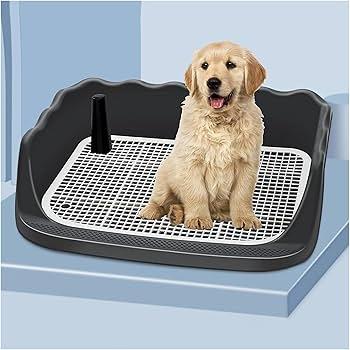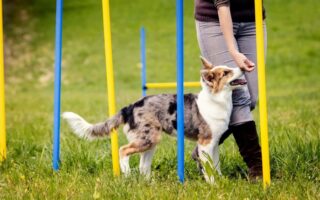Unlocking the Secrets of Puppy Toileting: A Guide for New Pet Parents
Bringing a puppy into your home is a delightful adventure filled with wagging tails, playful barks, and a bundle of uncontainable energy. However, amidst the joy of cuddles and cute antics lies a crucial aspect of pet care that every new puppy parent must master: toilet training. Understanding the nuances of puppy toileting is essential for ensuring a harmonious relationship between you and your four-legged friend. This article will delve into effective strategies, common challenges, and practical tips to equip you with the knowledge needed to navigate the world of puppy toilet habits, transforming potential frustrations into a smooth journey of learning and companionship. Whether you’re welcoming a feisty furball into your life or looking to refine your existing training methods, our comprehensive guide aims to shed light on this important topic, supporting both you and your puppy as you embark on this essential rite of passage together.
Table of Contents
- Understanding Puppy Toilet Training Methods
- Essential Supplies for Effective Puppy Potty Training
- Common Challenges and Solutions in Puppy Toilet Habits
- Establishing a Consistent Routine for Successful Housebreaking
- Q&A
- In Summary
Understanding Puppy Toilet Training Methods
Puppy toilet training is a crucial aspect of welcoming a furry friend into your home. There are several methods, each with its own advantages, depending on your lifestyle and your puppy’s personality. Crate training is one widely used technique, as it takes advantage of your puppy’s natural instincts to avoid soiling their sleeping area. Another popular option is paper training, where you provide a designated area with pads that mimic grass, teaching your puppy to relieve itself in specific locations. You may also consider outdoor training, which involves taking your puppy outside frequently, rewarding them when they do their business outdoors, thereby reinforcing their good behavior through positive reinforcement.
When selecting a method, consistency and patience are key to successful toilet training. Here are some essential tips to keep in mind:
- Set a schedule: Keep feeding times regular to predict bathroom needs.
- Watch for cues: Look for signs that your puppy needs to go, like circling or sniffing.
- Reward immediately: Offer treats and praise right after they go in the right place.
- Avoid punishment: It’s important not to scold your puppy for accidents; instead, focus on encouraging good habits.
| Training Method | Best For | Key Features |
|---|---|---|
| Crate Training | Dependable routine | Utilizes instinct, promotes structure |
| Paper Training | Indoor living | Convenient for bad weather, easy clean-up |
| Outdoor Training | Active owners | Encourages outdoor business, socialization |
Essential Supplies for Effective Puppy Potty Training
Successful puppy potty training hinges on having the right tools at your disposal. First and foremost, puppy pads are indispensable for indoor training, providing a designated spot for your pup to relieve itself. They come in various absorbency levels, ensuring that you find the right fit for your puppy’s needs. Additionally, a high-quality enzymatic cleaner is essential for managing accidents; this helps eliminate odors and discourages your puppy from returning to the same spot. To keep track of your puppy’s routine, a training schedule can be a simple yet effective tool, allowing you to maintain consistency and reinforce good habits.
Don’t overlook the importance of having a reliable leash and collar for outdoor training sessions. These ensure that your puppy can explore their environment in a safe manner while allowing you to guide them to an appropriate potty spot. A reward system, such as small treats or frequent positive verbal reinforcement, will also encourage your puppy to associate going outside with pleasant outcomes. consider investing in a puppy tracker app or a simple chart to log potty times, successes, and challenges; this will help you adjust your approach as necessary for optimal training results.
Common Challenges and Solutions in Puppy Toilet Habits
One of the most common challenges puppy owners face is inconsistent bathroom habits. Puppies often struggle to signal when they need to go outside, leading to accidents inside the house. This situation can be frustrating, but understanding a puppy’s natural instincts can help tackle this challenge. It’s essential to establish a routine that includes:
- Regular potty breaks: Take your puppy outside frequently, especially after meals, playtime, and naps.
- Positive reinforcement: Reward your puppy immediately after they use the toilet outside to reinforce good behavior.
- Watch for signs: Look out for circling, sniffing, or whining, which can indicate your puppy needs to go out.
Another barrier is a lack of understanding of potty training cues. Many puppies do not fully grasp the concept of where they should relieve themselves, leading to confusion. Solutions for this issue involve gradual training and consistent cues. Implementing the following strategies can promote better understanding:
- Designate a potty area: Choose a specific spot in your yard for bathroom needs, so your puppy associates that area with going to the toilet.
- Use consistent commands: Use simple commands like “go potty” to create a verbal cue associated with the action.
- Limit access indoors: When indoors, minimize your puppy’s access to carpets and other sensitive areas until they are more reliably trained.
Establishing a Consistent Routine for Successful Housebreaking
Creating a steady routine is essential in guiding your puppy through the housebreaking process. By setting specific times for feeding, play, and potty breaks, you can help your furry friend develop a sense of predictability. Keep in mind the following key points to ensure success:
- Regular Feeding Schedule: Provide meals at the same time each day to regulate bowel movements.
- Frequent Potty Breaks: Take your puppy outside immediately after meals, naps, and play sessions.
- Consistent Location: Always take your puppy to the same spot for toilet breaks to reinforce the desired behavior.
- Positive Reinforcement: Praise and reward your puppy each time they eliminate outside.
Monitoring your puppy’s progress and making adjustments to the routine can further enhance their housebreaking journey. Keep an eye on your puppy’s body language and become familiar with signs that they need to go outside. A helpful approach to track their progress can look like this:
| Time of Day | Activity | Notes |
|---|---|---|
| 7:00 AM | Feeding & Potty Break | First meal and immediate outdoor time. |
| 12:00 PM | Midday Potty Break | Take puppy out after playtime. |
| 5:00 PM | Feeding & Potty Break | Evening meal and outdoor session. |
| 10:00 PM | Final Potty Break | Last chance before bedtime. |
Q&A
Q&A: The Ultimate Guide to Puppy Toilets
Q1: What exactly is a puppy toilet?
A1: A puppy toilet is a designated area or product designed to help young dogs learn where to relieve themselves indoors or outdoors. It usually comprises an absorbent surface or artificial grass that mimics the feel of grass, promoting natural elimination behavior.
Q2: Why would I need a puppy toilet for my pet?
A2: Puppy toilets are especially helpful for puppy parents living in apartments or urban settings where outdoor access is limited. They provide a convenient solution for maintaining hygiene and can aid in house training by encouraging the dog to eliminate in a specific spot.
Q3: How do I train my puppy to use their toilet?
A3: Training your puppy to use a puppy toilet involves a consistent routine. Take your pup to the toilet after meals, playtime, and naps. Use positive reinforcement, such as treats and praise, when your pup successfully uses the toilet. Over time, they’ll learn to associate the area with relieving themselves.
Q4: Is there a right age to start using a puppy toilet?
A4: You can start introducing your puppy to the toilet as early as 8 weeks old. Puppies are naturally inclined to seek out specific areas to eliminate, so the earlier you begin, the sooner they can learn the appropriate habits.
Q5: What should I look for when choosing a puppy toilet?
A5: When selecting a puppy toilet, consider factors such as size, ease of cleaning, absorbency, and durability. A portable option may be suitable for taking on trips, while a larger, more permanent fixture may be ideal for continuous indoor use.
Q6: Are there different types of puppy toilets?
A6: Yes! Puppy toilets come in various forms, including grass pads, synthetic grass, and disposable pee pads. Each type has its own benefits, from natural feel to easy cleanup. You might prefer one over another based on your lifestyle and the specific needs of your puppy.
Q7: How do I maintain a puppy toilet?
A7: Maintenance is crucial! Regularly clean the area to prevent odors and health issues. For grass pads, rinse them out and replace them as needed. If you’re using pee pads, ensure to change them promptly to keep the area fresh and inviting for your pup.
Q8: Can adult dogs use puppy toilets, too?
A8: Absolutely! While puppy toilets are primarily geared towards young dogs, adult dogs can use them as well. This is particularly useful for elderly dogs or those with mobility issues who may need an easy-access option.
Q9: Will my puppy ever go outside if I use an indoor toilet?
A9: Using a puppy toilet indoors doesn’t mean your pup won’t enjoy the outdoors! Many puppies are happy to go outside for walks and play. The indoor toilet simply offers flexibility when outdoor access isn’t ideal.
Q10: Are there any potential drawbacks to using a puppy toilet?
A10: While puppy toilets can be quite helpful, some puppies may become reliant on them and avoid outdoor elimination. It’s essential to gradually encourage your dog to go outside as they grow and learn the expected behavior to avoid any long-term issues.
Remember, every puppy is unique, so finding the right solution for toilet training is key to a smooth transition for both you and your furry friend!
In Summary
As we conclude our exploration of the world of puppy toilet training, it’s clear that this essential aspect of pet ownership lays the foundation for a harmonious household. Whether you choose to embrace indoor options, outdoor routines, or a combination of both, patience and consistency are your best allies in this journey. Remember, every pup is unique, and the path to mastering those bathroom breaks may vary from one furry friend to another. With love, encouragement, and the right techniques, your puppy will soon bloom into a reliable companion. So, equip yourself with knowledge, approach the challenge with a sense of adventure, and watch as your little one learns the ropes, making each successful outing a milestone to celebrate. Here’s to those tiny triumphs that lead to a lifetime of companionship!



